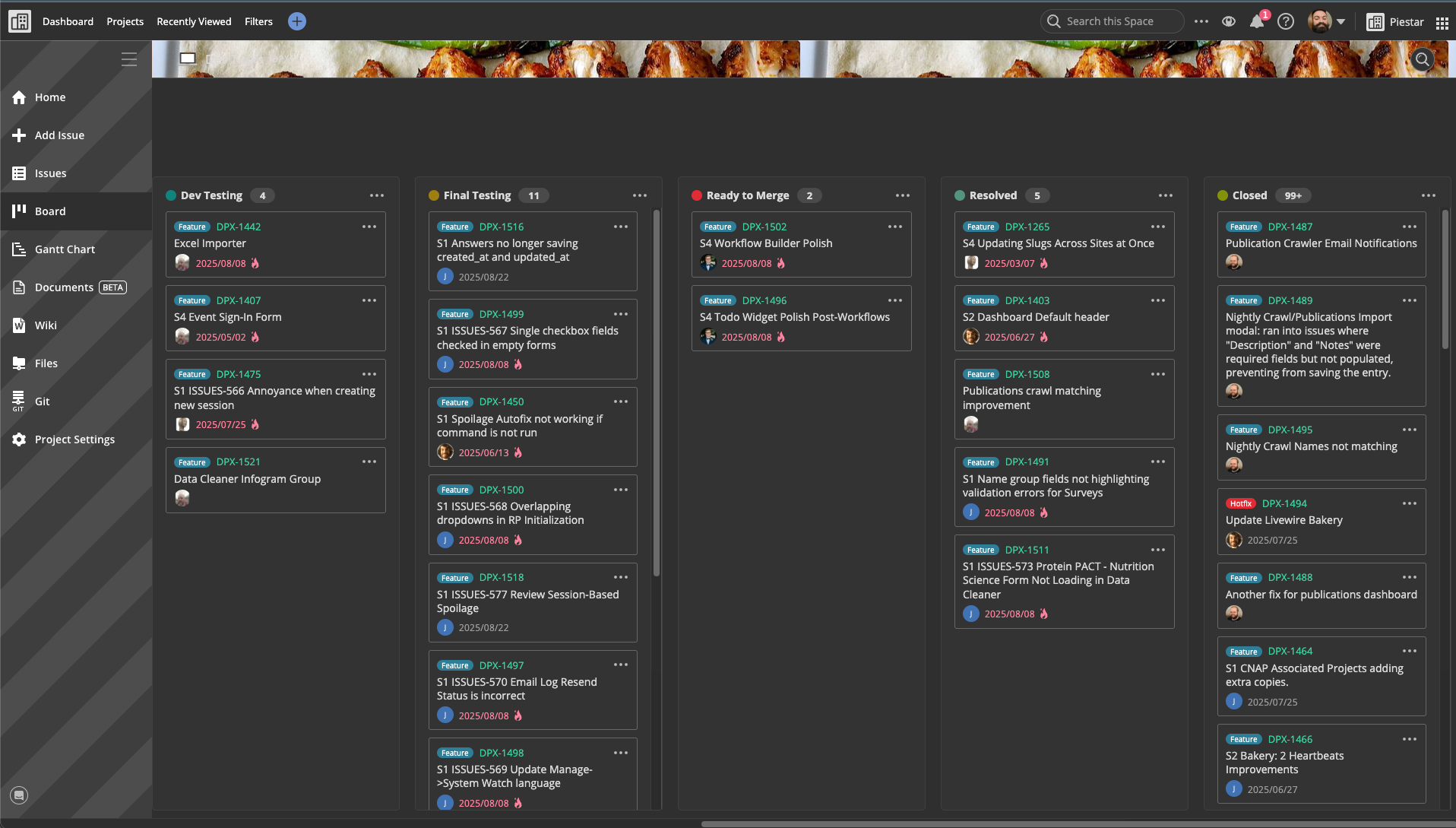- Home
- Case Studies
- Piestar
Piestar case study:
Increasing project visibility with Backlog
Introduction
In fast-paced software environments, development teams need tools that can scale with their needs, reduce friction, and support transparent collaboration. For Piestar, a Kansas-based software company focused on university research administration, those needs were amplified by their flexible, startup-style culture and distributed team structure.
Founded to help research programs track grant impact and streamline compliance reporting, Piestar has always embraced a DIY approach to workflows. But as the company grew, their development team needed a more structured yet adaptable way to manage tasks, sprints, and bug tracking, without disrupting how they worked best. That’s when they turned to Backlog.
Challenges
Before adopting Backlog, Piestar’s developers used a combination of physical and digital Kanban boards to manage their tasks. While this method provided a high-level view of work in progress, it fell short when it came to tracking the kind of detailed information needed for sprint planning, QA, and bug reporting.
“We were always looking for better ways to track additional information outside of just task names and descriptions,” says Ryan Woodburn, Piestar’s Director of Software Development.
The lack of structure made it easy for tasks to slip through the cracks, especially when non-developers had no clear way to submit bugs or feedback. Issues were often forgotten or delayed simply because there was no system in place for surfacing them effectively.
How Backlog Helped
Backlog gave Piestar the structure they were missing without compromising their flexibility. After implementing the platform in November 2019, the development team began using Backlog for sprint planning, task tracking, and internal coordination.
“I use Backlog to plan out future sprints and track which branches I need to test,” said Woodburn. “Our developers use it to keep track of their tasks and know when branches need additional changes after being tested.”


Other teams across the company also started using Backlog, finding it made their workflows simpler and more efficient. “Support and sales use Backlog’s email integration to quickly note issues that need fixing without interrupting what they were working on.”
Several features made Backlog stand out to the team. Linking tickets across projects manually helped developers track related tasks and dependencies, while the built-in wiki feature served as a go-to space for documentation.
“We liked the built-in wiki feature, the ability to add dates to tasks, and being able to link tickets across different projects,” Woodburn said. Perhaps most importantly, Backlog’s customizable statuses allowed Piestar to match the platform to their own internal process.
“I love the ability to create tickets via email and link tickets to related tickets in other projects,” he said. “I also just appreciate having easily customizable statuses for tickets.”
Results
Since adopting Backlog, Piestar has seen measurable improvements in development visibility, sprint execution, and cross-functional alignment, including:

“People will actually report bugs they find instead of making mental notes to ‘get around to mentioning that’”
What's next for Piestar
As Piestar continues to grow and refine its development workflows, Ryan Woodburn sees Backlog as an essential part of the team’s future.

“I recommend Backlog for any other teams that are experiencing the same growing pains we went through on being able to track everything that needs to be done, is being done, or is done and needs testing.”
With a tool that meets the needs of both developers and non-technical teams, there’s no need to reinvent the wheel. Looking ahead, Piestar plans to continue expanding its use of Backlog to support future development projects, streamline team collaboration, and strengthen visibility across all stages of work.


Industry
Information technology
Location
Kansas
Members
11-50
Read more Backlog success stories

Books Kinokuniya

Smart Coach

3D Estate
